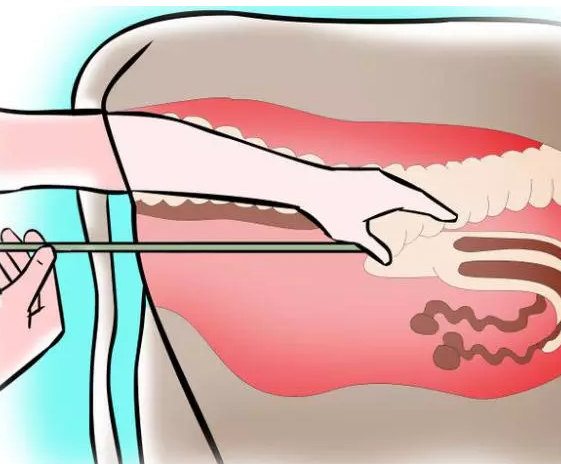The use of artificial insemination is an opportunity to select bulls tested for calving ease, it also allo https://www.agrarheute.com/tier/rind/rinder-nachzucht-so-gelingt-kuenstliche-besamung-529407 ws the use of top sires from different breeds. The breeding progress in the own herd can thus be increased.
https://www.agrarheute.com/tier/rind/rinder-nachzucht-so-gelingt-kuenstliche-besamung-529407 ws the use of top sires from different breeds. The breeding progress in the own herd can thus be increased.
Suckler cows are often an extensive husbandry practice. The stud bull in the herd is the usual procedure to ensure regular pregnancy of the cows. The bull in the herd saves the regular intensive heat time detection, this time expenditure is not always compatible with the extensive suckler cow husbandry. Nevertheless, it makes sense to think about the application of artificial insemination (AI) to suckler cows.
The use of artificial insemination eliminates the need to keep a bull. AI offers the opportunity to use the semen of various top sires to develop the herd. In addition, the semen for artificial insemination has been tested for transmissible diseases and with regard to fertility. And the use of AI offers the opportunity to use selected sire genetic for the individual cow, this might be useful in terms of dystocia, meat quality or carcass yield. Consistent and professional management of fertility in the herd is essential if you want to use artificial insemination for a herd of beef cattle in a practicable way.
The advantages of using artificial insemination are tested semen with regard to transmissible diseases and fertility, the use of top sires, the use of different breeds, better adaptation of paternal genetics to the individual cow and a shortened mating season and calving period. However, heat detection is time-consuming and a possibility to fixate the cows is mandatory.
Artificial Insemination -- a procedure that has its charms, not only with regard to the prevention of dystocia. However, suckler cow husbandry does not remain an extensive production method.
Literature:
- Berry, D.P. et al. (2020): Choice of artificial insemination beef bulls used to mate with female dairy cattle. https://doi.org/10.3168/jds.2019-17430
- Canu, S. et al. (2010): Predisposition to repeat breeding in UK cattle and success of artificial insemination alone or in combination with embryo transfer. https://doi.org/10.1136/vr.c3544
- Jung, M. (2011): Künstliche Besamung Fleischrind. https://publikationen.sachsen.de/bdb/artikel/14925
This Research Innovation has an Impact on:
- Socio-economic resilience: The costs for equipment will increase by using AI; the use of different sires for different cows helps to receive higher prices
- Animal health and welfare: The semen for AI is tested for fertility and transmissible disease that increases herd health. Calving ease will decrease by choosing the right bull.
- Production efficiency and meat quality: Because of adjusted sire genetic better feed conversation rate, daily weight gain, carcass yield and carcass quality are possible.
In terms of Artificial Insemination for suckler cows see also a good practice from Ireland on the BovINE Knowledge Hub, click here!